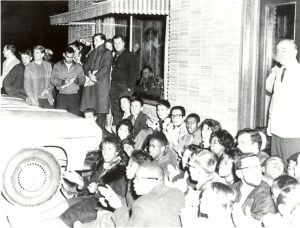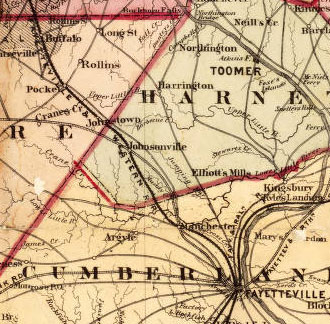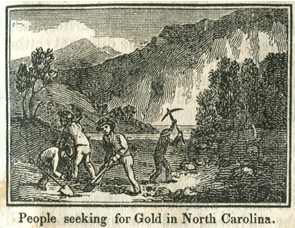
This Month in North Carolina History
In February 1960, when four African American students from what was then the Agricultural and Technical College of North Carolina defied the law and custom of the racially segregated South by sitting down to be served at the lunch counter of the Woolworth store on Elm Street in Greensboro, they sparked a protest movement that rapidly spread from North Carolina through the rest of the South and the United States as a whole. The “sit-in” movement affected every part of American society, but it particularly galvanized black students. Realizing the potential in this outpouring of youthful energy, the Southern Christian Leadership Conference, under its executive director, Ella Baker, convened a meeting of local and regional student activists in Raleigh, North Carolina, at Shaw University, Baker’s alma mater, April 15 through 17, 1960. Representatives from the National Association for the Advancement of Colored People and the Congress of Racial Equality, among others, lobbied the assembled students to align themselves with one of the established civil rights organizations. From the very beginning, however, there was a strong sentiment in the meeting for the creation of a grassroots coalition run by students themselves. Many felt that the mainline movements were not radical enough and that the student led sit-ins had broken new ground in the fight against segregation. This was echoed in strong speeches by James Lawson and Martin Luther King, Jr., criticizing the more conservative elements in the movement. In the end, the meeting voted to create a separate entity, the Student Nonviolent Coordinating Committee, to pursue a new vision of civil rights protest.
SNCC (pronounced “snick”), while it was rooted in African American civil rights protest, shared many of the goals and aspirations of the radical culture of the 1960s. SNCC attempted to create democratic decision making, emphasizing consensus building from the ground up. Both men and women participated in the organization in its early years, and many white students joined. In many ways SNCC became the cutting edge of a new civil rights militancy. SNCC provided many of the “Freedom Riders” on the integrated bus trips through the South sponsored by the Congress on Racial Equality in 1961. SNCC volunteers also participated enthusiastically in voter registration drives throughout the South. In all of these activities SNCC volunteers dealt with verbal abuse, physical violence, and the threat of death. In the mid-1960s SNCC had the largest staff of any civil rights organization in the South and had become a force to be reckoned with.
Increasingly in the late 1960s SNCC moved in the direction of Black Power, eventually rejecting its nonviolent roots and its racial inclusiveness before it faded from the scene in the 1970s. Its impact on the civil rights movement, however, was important and lasting. SNCC was a key element in shifting the movement away from a legalistic vision of reform to a direct, if nonviolent, confrontation with the segregated system. It provided what some have called the “shock troops” of this direct confrontation in some of the most difficult and dangerous times of the civil rights struggle. Former president Jimmy Carter is supposed to have said that if you wanted to scare the white people of the South you only needed one word – SNCC.
Sources
Carson, Clayborne. In Struggle: SNCC and the Black Awakening of the 1960s. Cambridge, MA: Harvard University Press, c.1995.
Lewis, Andrew B. The Shadows of Youth: the Remarkable Journey of the Civil Rights Generation. New York: Hill and Wang, 2009.
Image Source:
“Demonstration at Brady’s Restaurant, Chapel Hill, February 11, 1964,” in North Carolina County Collection (P0001), North Carolina Collection Photographic Archives, Wilson Library, University of North Carolina at Chapel Hill.




